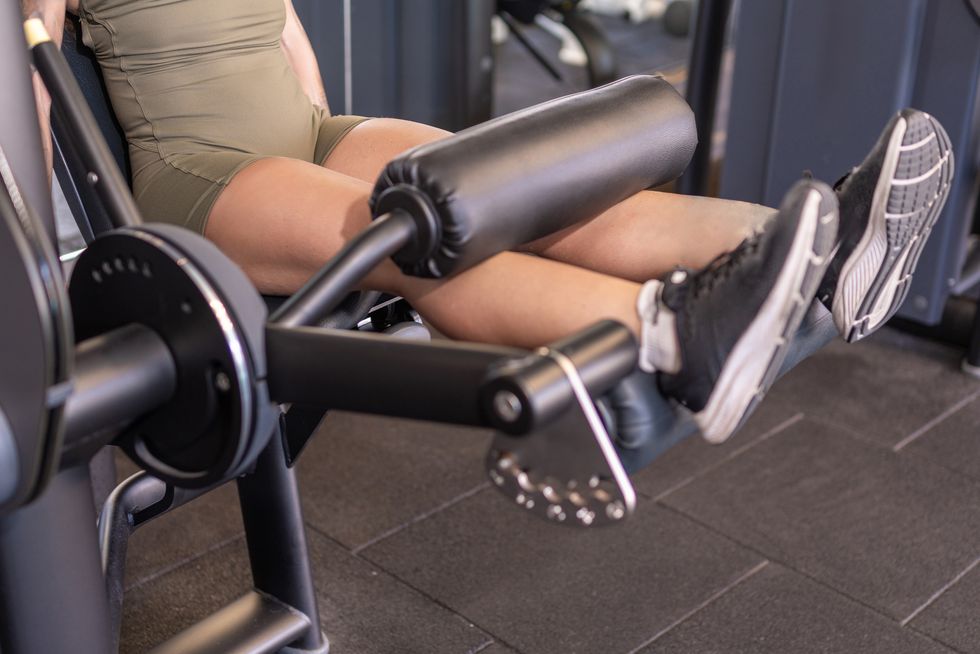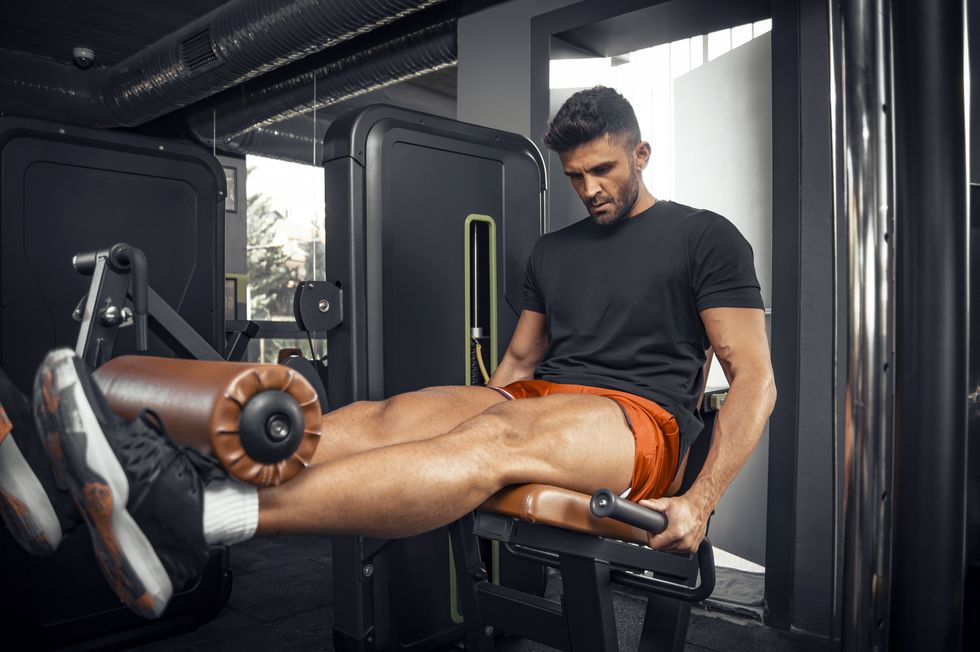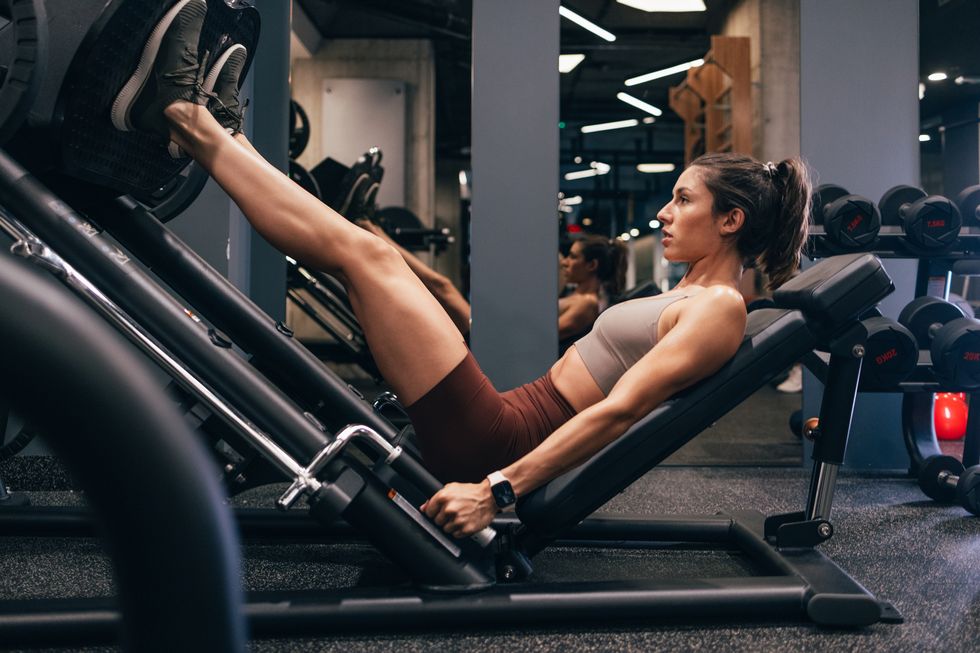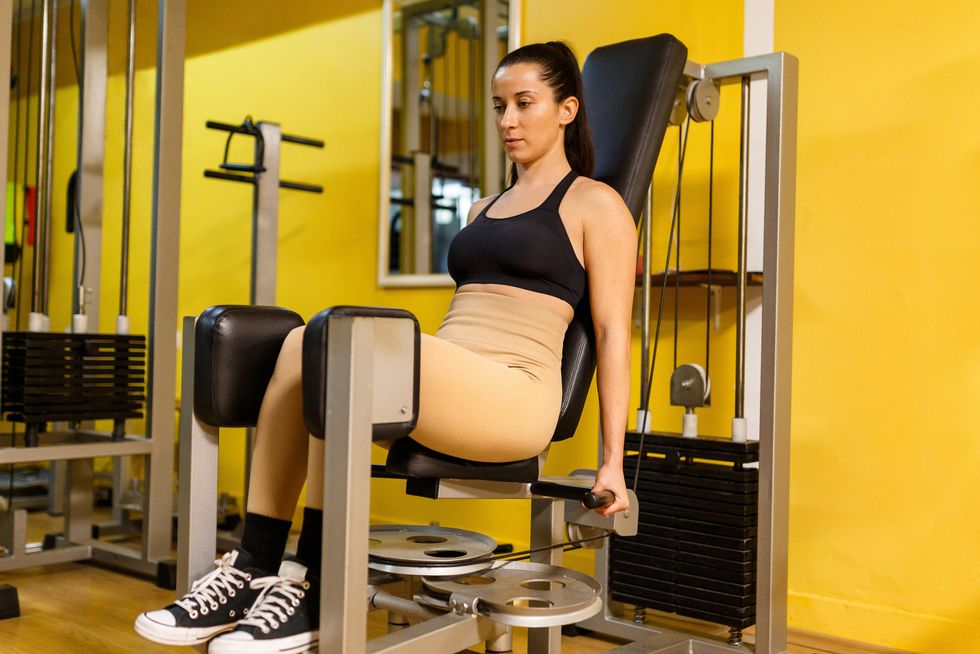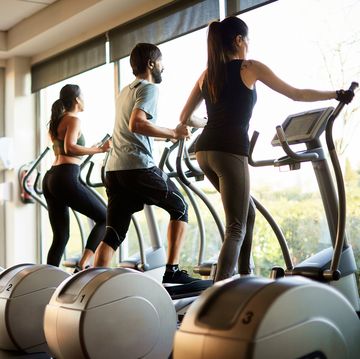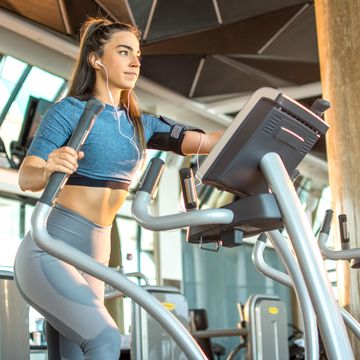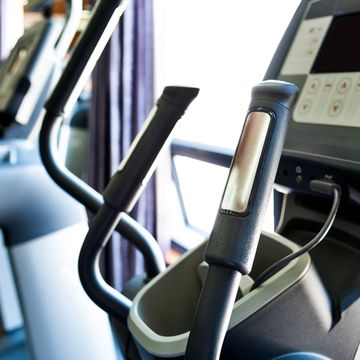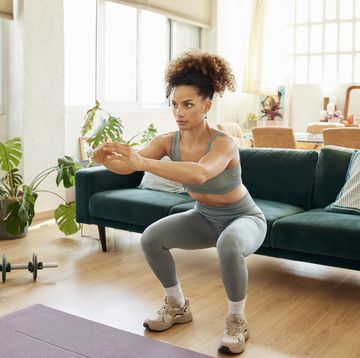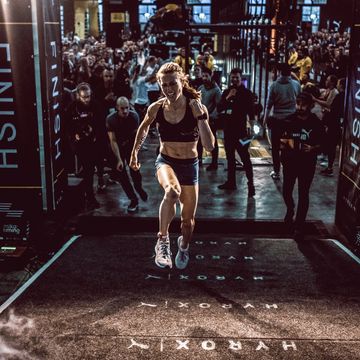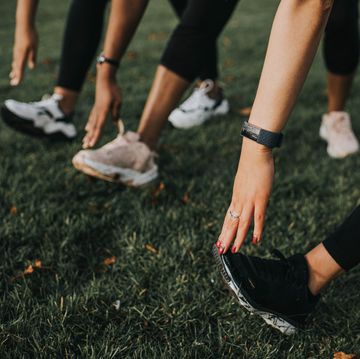You want to run further, faster and more efficiently – so it makes sense to just run, right? Being consistent with running is obviously important for progress, but it doesn't mean that running should be the sole component of your training. Rather, you'll find that much running improvement is to be made in the gym – and we don't just mean on the treadmill.
'Rather than doing exercises that mimic the action of running, choose exercises based on your desired outcome,' says personal trainer Roberta Watts. That's where strength training using weight machines can help, and give you the edge when it comes to boosting your running speed and endurance.
Why is strength training important for runners?
'Strength training is crucial as it helps improve muscle imbalances, enhances stability, and reduces the risk of injuries,' says Ellen Thompson, head personal trainer at Blink Fitness in New York City. 'It also contributes to better running economy (that is, how efficiently you use oxygen and energy while running) and overall performance by increasing power and efficiency in stride mechanics.'
A 2016 study in The Journal of Strength & Conditioning Research supports this, having found that strength training performed two to three times per week for eight to 12 weeks had a 'large, beneficial effect' on the running economy of highly trained middle- and long-distance runners.
Where do I start with weight machines?
While you don’t need weight machines to strength train, they provide stability and support in a safe environment, which is ideal if you're new to the gym. That said, weaving other functional movements and free weights into your routine can also help to train your core, balance, muscle coordination and overall strength in a full range of motion.
Weight machines can feel alien at the start, but knowing which ones to use, and of course how to use them, can be a game changer for your running potential. Leg machines are a great place to start – so try our four favourites below.
Best leg machines for runners
As a general rule of thumb, complete three sets of 10 to 12 reps when using each leg machine.
Leg curl machine
Why it works:
This machine provides stability and support, so you can really focus on strengthening your hamstrings and the muscles around it. Strong hamstrings play a key role in stabilising the knee joint, which can prevent injuries such as strains and tears. They also contribute to better running mechanics and overall performance, especially when it comes to sprinting and hill running.
How to use it:
- Opt for a seated or lying leg curl machine – whichever is available to you.
- If sitting, place your feet on top of the leg roller with straight legs. Then, push the weight down, bending your knees. If you’re lying face down, place your feet under the roller and pull the weight up, again bending your knees.
- Straighten your legs back out.
- Repeat.
Tips for runners:
Make sure your knee joint is aligned to the axis of the machine and control the motion in both directions with a tempo of three seconds down and three seconds up. You may benefit from single leg versions of this movement, too, since we spend about 95% of our time running on one leg.
Leg extension machine
Why it works:
The leg extension machine looks similar to a leg curl machine, only the roller pad is positioned lower to target the quads. It is an effective way to work the quads, which support the knee joint and help to absorb the impact of each stride as you run.
'Well-developed quads contribute to overall knee stability, reducing the risk of injuries like patellofemoral pain syndrome, otherwise known as runner’s knee,' says Thompson. 'Strong quads also improve running efficiency and power during uphill sections, and work to control the descent when running downhill. This in turn helps to keep the knees from buckling.'
How to do it:
- Place the roller pad under your ankles. Press your back firmly against the seat and hold both handles for stability.
- Raise the weight to hip height, straightening your knees.
- Bend your knees back down.
- Repeat.
Tips for runners:
Try not to swing your legs as you move them. Instead, keep them controlled and fully lock out your knee during each extension.
Leg press machine
Why it works: The leg press machine strengthens the hips, quads and hamstrings and allows you to work each leg individually in a controlled, stabilised manner. It also helps to strengthen your core, which in turn can improve your posture, breathing pattern and efficiency while running.
How to do it:
- Lie with your back flat against the seat and place your feet on the platform above, shoulder-width apart.
- Bend your knees to a 90 degree angle as you lower the weight toward you, making sure knees don’t cave in.
- Pause for a few seconds, then straighten your legs to push the weight back to the starting position.
- Repeat.
Tips for runners:
Stay within your active range of motion – you should be able to pull your foot away from the plate when in the bent-knee position.
Abductor machine
Why it works:
The abductor machine is great for firing up and strengthening the glutes and core. Many runners tend to have weak or inactive glutes – which can lead to lower back pain and reduced power while running – so this machine can help to combat those problems.
How to do it:
- Sit with your knees inside the pads.
- Hold the handles of the machine for support and keep your back pressed against the seat.
- Press both legs outward against the pads.
- Slowly return your legs to their starting position in the centre.
- Repeat.
Notes for runners:
Keep your core engaged and make sure your leg movements are slow and controlled, both during the pushes outward and the returns to their starting position. Don't go too heavy with the weight.
How should runners use weight machines?
Increase weight appropriately
Be mindful of how easy you are finding your work on the weight machines. If you find yourself completing more than 15 reps in a set, then it's probably time to increase the weight. You don't want to overextend yourself, though, so don't increase the weight by too much each time.
Vary your machine routine
More isn't always better when it comes to weight machines, so build them into your routine two to three times per week – not every day. If you're a runner, remember that most of your training should focus on mileage, and strength training is intended to support the running.
That said, you'll still need to commit to the strength workouts for a number of weeks. 'Doing something once does not induce enough stimulus where your body will need to rebuild and become stronger,' says Thompson. So, aim to do the same weight machines exercises for four weeks to see progress.
At the one-month mark, try to mix up your weight training – for example, by exchanging barbell squats for double kettlebell squats. If you stick to the same exercises for too long, your body will adapt and the exercises will stop inducing stimulus to build strength.
Cut back before a race
While everyone is different, Thompson recommends focusing on rest, recovery and mobility rather than using weight machines in the days leading up to a race.
'Foam roll or use a massage gun if you have one,' says Thompson. 'See if you can touch your toes with your feet together and knees straight. This is a good way to see if anything is tight.' This recovery, along with getting at least seven hours of sleep a night, is most important for runners just before a race.
Be patient with your progress
Just like running, strength training takes time and patience.
'Sometimes people will get really frustrated when they first start strength training because they get sore or don’t know what to do,' says Steven Stonehouse, NASM-CPT, a running coach based in Irvine, California. 'Don’t bail on it right away. Expect there to be a learning curve and be patient, because you’re not going to get extremely strong overnight.'
While results vary from person to person, you can expect to see the rewards of your strength training two to four weeks after starting.
Make time to rest
Although work-to-rest ratios will vary based on the intention of your training session, Stonehouse says the general rule of thumb is to lift weights and rest in a 1:1 ratio.
For instance, if it takes you 45 seconds to complete an exercise, then rest for 45 seconds before starting your next set. You might rest less between sets on days when you’re moving lighter weights or doing things like supersets or circuit training.
'Recovery time helps to replenish energy stores, reduce fatigue and maintain proper form during subsequent exercises, ultimately optimising the effectiveness of your workout and minimising the risk of overtraining or injury,” says Thompson.
And that, in turn, is a recipe for stronger, healthier and more efficient running.

